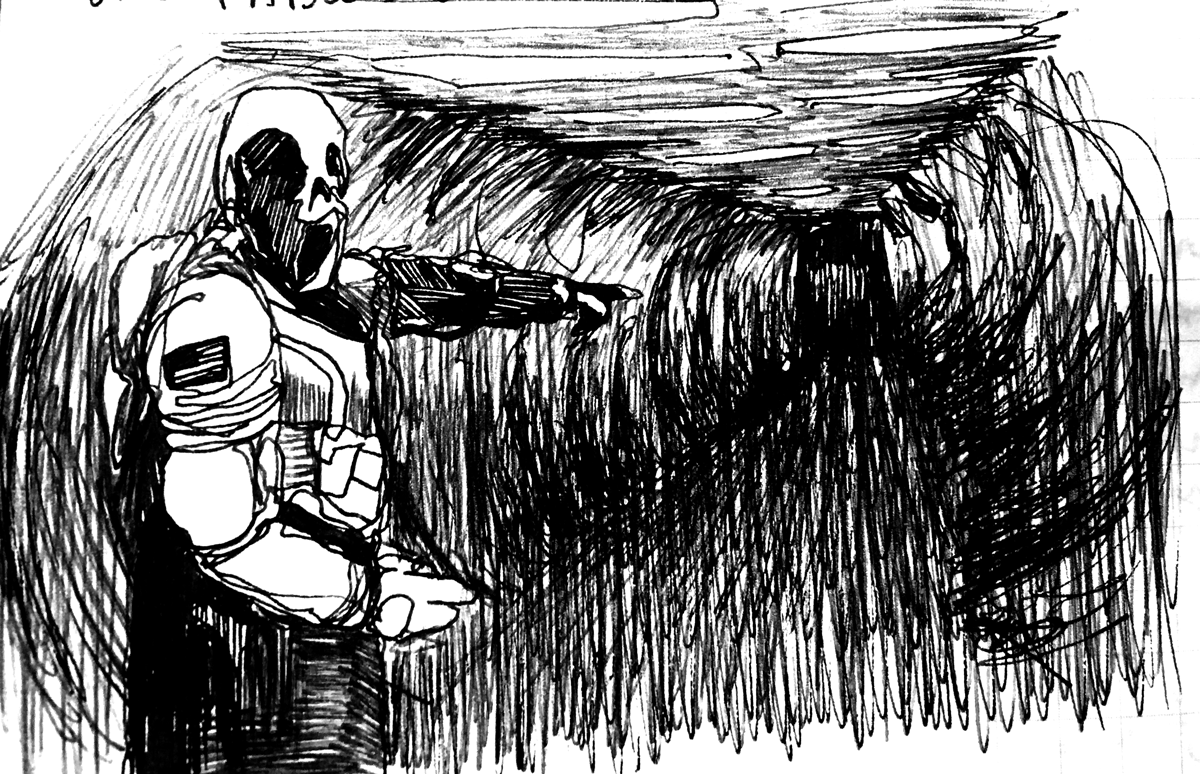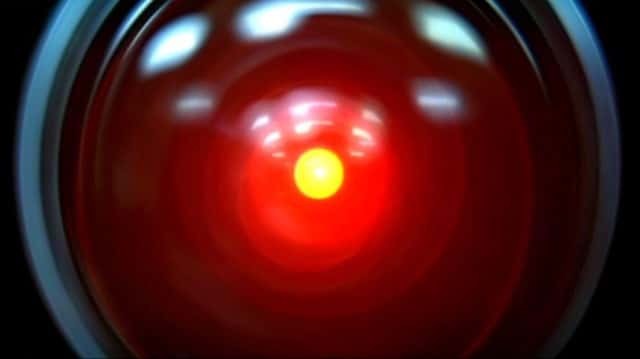 |
| You can't tell precisely what you're seeing, but you can tell what this game is about. |
Along comes Mothership (DriveThruRPG) to the rescue! Motherfucking Mothership knows when to say when! And that's almost immediately. Mothership is a very light game designed to get you up and going as quickly as possible in your own terrifying vision of tomorrow.
Let me back up for a second. Mothership: Player's Survival Guide is the core rulebook of Sean McCoy's space horror game. The words, art and layout are all him. Mothership: Dead Planet, however, is an adventure for the Mothership RPG, written by Donn Stroud, Fiona Maeve Geist, and Sean McCoy with art from Sean McCoy and Stephen Wilson.
You'll notice that I mention the game and its first adventure together; that's because the Player's Survival Guide alone doesn't feel like a complete game so much as a game-making tool. This is a strength, but there are some drawbacks. Let's discuss.
The mechanics described by the PSG are light, fast and intuitive. The trinity of solid RPG design, if you ask me. It gives you a fast class-based character creation system; the classes are just starting points at creation time. A very nice touch: the character sheet contains almost all the information you need to make a new PC. If only they had printed a couple tables on the back of the sheet, it would be perfect.
 |
| The future |
These mechanics don't reinvent the wheel, but that's the point. Fast and practical. There's a simple three-tier skill tree and skills provide stat bonuses equal to 10% for the first tier, 15% for the second and 20% for the third.
 |
| Better crit that first aid, players |
I can hear someone saying: sounds great, but where's the space horror? Well, there are mechanics for stress and freaking out. Every time something terrible happens or something freaky comes along, PCs make a Sanity or Fear save. On a failure, they accumulate Stress points.
Then, when something really bad happens, PCs have to make a 2d10 Panic check. If they roll under Stress, they bug out, and you roll on a table to find out how. If they aren't under too much stress and they are steely-eyed, a character can actually perform better. But as stress (and Stress) accumulates, this becomes less likely, and something catastrophic becomes more imminent.
 |
| Stressful |
Unfortunately, I should also mention that some of the text was in too small a font in too low a color contrast to see with as much clarity. This was partly a concession to style (it's utterly beautiful and colorful) as to the size of the page in the zine format. You can magnify the PDF to your heart's content, but you lose another feature of the layout: it often takes advantage of the two-page spread.
 |
| I don't fucking think so |
The question then becomes: if I wanted to create my own space horror campaign from scratch, would I use the Mothership rules? That's a tough one. If I wanted to use published content from another science-fiction horror game, it becomes a pain to convert all the statistics, so MS would have to be more than just a little bit better to make it worth it. While I think it's a pretty damn good system, I don't think it's good enough to justify that.
 |
| Just Kickstarted, this might actually add some detail to the Mothership universe |
But what if I'm not in the mood to design my own space horror setting? Mothership may not have a GM's guide or even much of an implied setting, but it does have a great adventure: the aforementioned Dead Planet. But while DP does a good job of showing what Mothership can do, it doesn't help with either the setting or a broader campaign.
But as for the adventure itself, it does a great job of emulating the atmosphere and pacing of a movie like Alien without forcing the players down a rail. Basically, the party is travelling in their FTL ship for reasons, and instead of reaching their destination, they arrive in a Space Bermuda Triangle: countless human derelicts orbit a barren moon, which in turn orbits a turbulent planet. And the jump drives don't work anymore.
This adventure does a great job of giving you the meat of an adventure without wasting your time with things that you can improvise on the fly. Which it forces you to do a lot, despite the fact that there's plenty going on here. There are weird things happening on the dead ships, there are bad things happening on the airless moon and there are truly dire things happening on the planet.
Much of the adventure will consist of investigation, diplomacy and planning, interspersed with a steadily rising tension. Occasionally, the suspense explodes into danger and violence, and several sites on the planet could serve as suitable stages for a bloody climax.
 |
| Must be a bitch to keep clean |
Dead Planet has a lot going on, and the dread steadily built to a satisfyingly tense finale. All my players made it out alive, although one had been incapacitated at the very end. But they were sure that they were marching to their doom, and with a few missteps, they could have been.
 |
| Bad space day |
And like I said, the adventure does nothing to establish or even imply much about a broader setting. There isn't even much of an explanation for why certain significant things are happening. All of this lack of detail makes it very easy to adapt DP to an ongoing campaign. But it's of limited value for helping us to get started with Mothership.
 |
| Not all space horror is worth emulating |
Another issue I had with Dead Planet was extremely specific: on the third level of the abandoned complex on the planet, there are instructions that the party will encounter 1d10 wandering enemies if they remain still for a single round, with more arrive each round at the rate of +1d10; so roll 1d10 on the first round, 2d10 on the second, etc.
I have two problems with this. First, it's astoundingly deadly; it's very easy to imagine the party being surrounded and overwhelmed by the third round, if not sooner. Second, there are no instructions for what should happen if the PC's don't hang around doing nothing. Presumably, this floor is infested with encounters, so it's hard to imagine how the party will avoid them even if they're moving quickly.
Oh, one more issue! Neither PDF was bookmarked. This seems like a no-brainer, and the documents were otherwise very carefully designed. If either product had been longer than it was, this would have been a significant issue for an online GM such as myself.
Well, my players were impressed by Dead Planet, and they'd like to return to the world of Mothership, so that's an empirical sign of success. I'm already thinking about how to continue the space horror; maybe, similar to Aliens, they are employed to return to the titular astronomical body with under-prepared scientists and mercenaries. After all, you know what they say:
In space, no one can hear you rip off the classics.
 |
| (but someone might read your lips) |

No comments:
Post a Comment